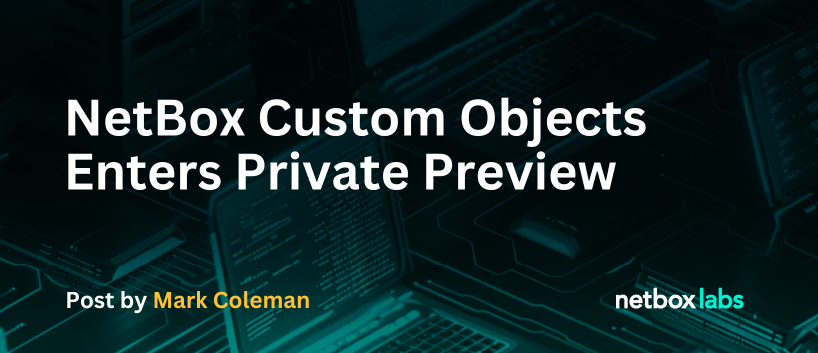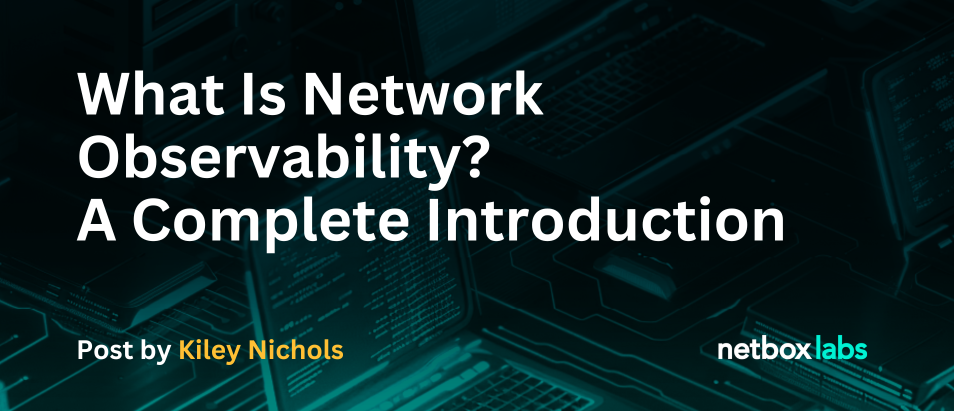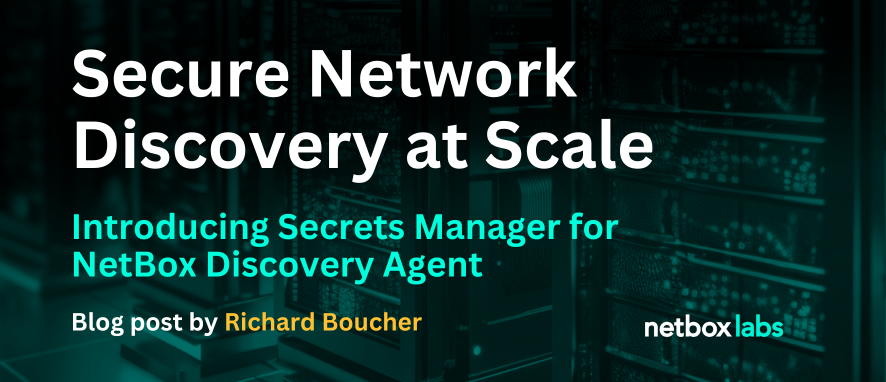NetBox’s role as the network source of truth continues to expand, and as our user community grows, so too does the need for flexible, intuitive data modeling capabilities. Today, we’re excited to announce the Private Preview of a hotly anticipated new feature: NetBox Custom Objects.
(Note: This is the same feature we previously introduced as “Service Mappings” in our February Tech Preview—we’ve changed the name to better reflect its broader applications)
What are Custom Objects?
NetBox Custom Objects is designed to address a specific but widespread challenge related to data model extensibility: easily and scalably modelling your own object types in NetBox. This new capability provides a powerful “middle ground” between Custom Fields and developing full Plugins.
Custom Objects allows you to define and manage objects that make sense for your specific business context – whether you’re mapping application dependencies, customer service relationships, or specialized network configurations that don’t fit neatly into the existing data model.
Finding the Sweet Spot
Network teams have historically faced a difficult choice when extending NetBox’s data model:
- Custom Fields are intuitive and easy to get started with, but can become challenging to maintain at scale, especially when trying to represent complex relationships
- Plugins offer powerful extensibility but require development expertise and ongoing maintenance
Custom Objects strikes the perfect balance—offering the simplicity of Custom Fields with much of the power of plugins, without requiring programming knowledge or maintaining separate code.
Model what matters to your business
To help explain the power of Custom Objects, consider the following simple example: DHCP Scopes.
Today in NetBox you could approximate DHCP Scopes with IP Ranges and Custom Fields, or by creating your own plugin, but with Custom Objects you can create a new object type in NetBox called “DHCP Scope” which can accurately model the DHCP Scope’s IP range, lease duration, default gateway, reservations, DHCP Options, and anything else that makes sense for your team, all without touching a single line of Python.
Defining your own infrastructure models is already a big win, but Custom Objects is highly flexible, so you could also use it to model things that are “higher in the stack” than your infrastructure, like applications. It’s common for teams to want to connect the things that their users care about, like applications, to the underlying infrastructure in NetBox. There are many reasons for this but the one that comes up often is impact analysis. How many times have you wanted to remove or change something in your network like a VM or an optic, but felt unsure about who would be impacted?
The flexibility of NetBox Custom Objects means that you could create an “Application” model to create a mapping between the applications that your users care about, and the infrastructure that those applications rely upon. Then if you need to change something in the network, you can query NetBox to know who to warn ahead of time, and if something breaks in the network, you know who to reach out to while you’re working on a fix.
Custom Objects even lets you reference other Custom Objects, allowing you to model hierarchical relationships, like application stacks.
The sky is the limit
The response to our Tech Preview has been overwhelming, with users across various industries sharing compelling use cases:
- Internet Exchanges modeling customer relationships with associated switchports, VLANs, contact groups, and IP resources
- Enterprise IT teams mapping applications to their underlying infrastructure components for impact analysis and change management
- Telecom providers defining service offerings with associated physical and virtual components
- Educational institutions creating relationships between network resources and departments or research groups
- Financial services organizations modeling application dependencies for compliance and disaster recovery planning
We’re looking forward to seeing the emergence of modelling “best practices” from across various industries and we’re already working through ideas to make extending the NetBox data model a community driven, collaborative effort.
From Service Mappings to Custom Objects
Some of you may recall our earlier Tech Preview about “Service Mappings” in February. Based on your valuable feedback and a deeper understanding of how this feature would be used across different environments, we’ve renamed Service Mappings to Custom Objects to better reflect its broader utility beyond service definition.
This name better captures the feature’s versatility as an extension mechanism for NetBox’s data model that can be applied across numerous use cases, not just service definitions.
Timeline and Availability
We’re working hard to get Custom Objects into beta and make it available to users of all editions of NetBox, including the community edition in the NetBox 4.3 timeframe. This feature represents our commitment to providing powerful data modeling capabilities that grow with your needs while remaining accessible to all NetBox users.
Join the Private Preview
If you’re interested in shaping the future of NetBox Custom Objects, we’d love to have you join our Private Preview program. We’re particularly interested in organizations with specific relationship modeling challenges that could benefit from this feature.
Please complete the form below to express your interest in participating. We’ll select participants based on use cases and work with you to ensure Custom Objects meets your specific requirements.
We look forward to collaborating with you on this exciting new capability!


